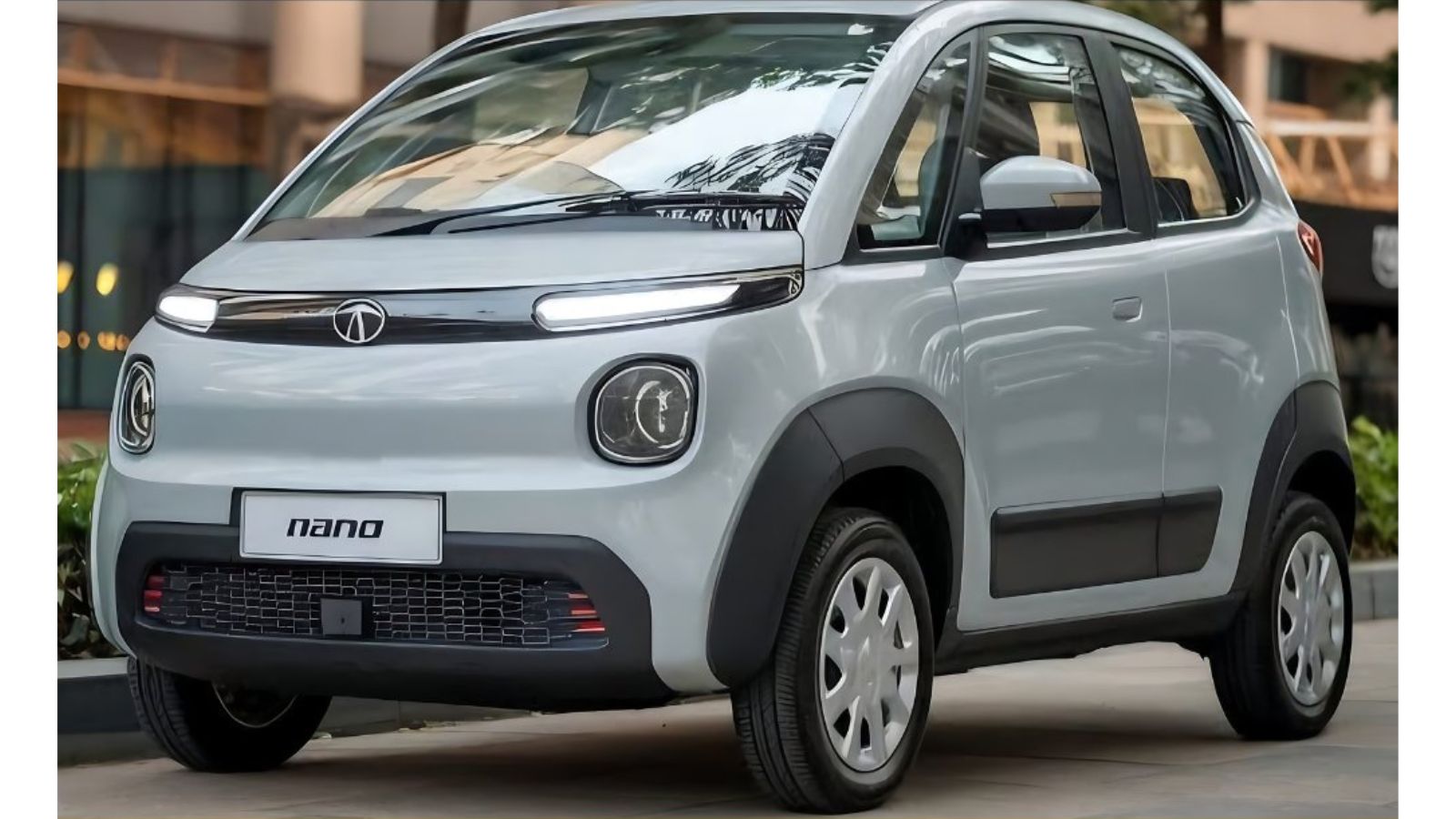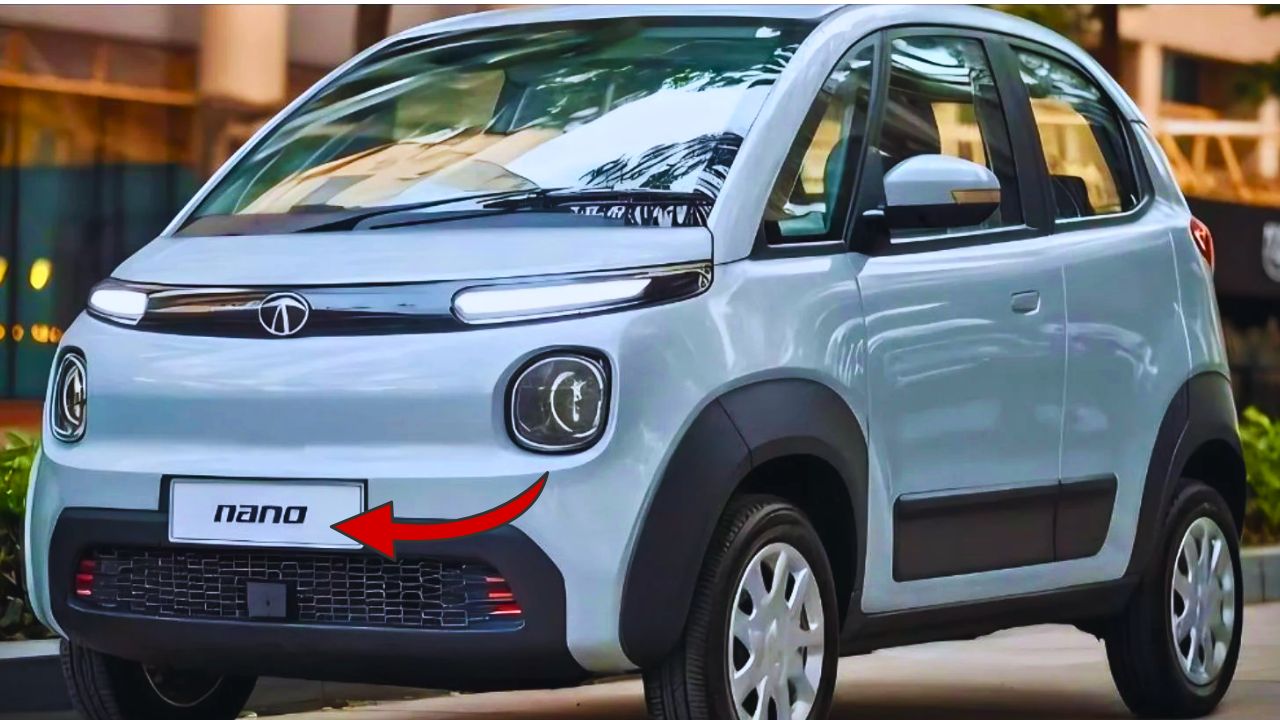Tata Nano, once renowned as the world’s most affordable car, is making a highly anticipated return in an all-electric version.
Tata Motors is set to redefine urban mobility with the Nano EV, offering affordability without compromising on cutting-edge electric technology. This new iteration of the Nano is expected to be a game-changer in the electric vehicle segment in India, providing an accessible and efficient solution for daily commuters.

The Nano EV is designed to cater to budget-conscious consumers while integrating modern advancements that enhance its performance, safety, and driving experience. With the rising demand for electric vehicles in India, the Nano EV could play a crucial role in accelerating the transition from fuel-powered cars to sustainable electric alternatives.
The Nano EV will likely build on this success by offering an entry-level option for consumers looking to switch to electric vehicles without breaking the bank.
Expected Launch and Price
Although Tata Motors has not officially confirmed the launch date of the Nano EV, industry experts predict that the car may hit the market by late 2025 or early 2026. The pricing is expected to be highly competitive, possibly ranging between ₹6 lakh to ₹9 lakh, making it one of the most affordable electric vehicles in the country. This strategic pricing will place it in direct competition with models like the MG Comet EV, Tata Tiago EV, and Citroën ë-C3, providing an economical yet reliable choice for city driving.
Powertrain and Performance
The Tata Nano EV is expected to feature a well-optimized electric powertrain that balances performance with efficiency.
- Motor: The car will likely be powered by a permanent magnet synchronous motor capable of delivering approximately 75 horsepower and 140 Nm of torque.
- Battery: A 30 kWh lithium-ion battery pack is anticipated, offering a driving range of up to 300 km on a single charge under standard testing conditions.
- Charging: It is expected to support both DC fast charging and AC home charging. The fast-charging capability will enable the battery to reach 80% charge within an hour, while a full charge using a standard home charger may take around 8 hours.
- Performance: The Nano EV is projected to accelerate from 0 to 60 km/h in approximately 7.5 seconds, with a top speed of around 120 km/h.
With these specifications, the Nano EV is poised to become a practical and efficient electric car for daily commutes, ensuring a smooth driving experience within city limits.
Design and Interior Features
The Tata Nano EV is expected to receive significant upgrades in both exterior and interior design, aligning with modern automotive trends.
- Exterior: The new design will likely feature sleeker LED headlamps, aerodynamic elements for improved efficiency, and 13-inch alloy wheels that enhance its road presence.
- Interior: Inside the cabin, the car is expected to offer a minimalist yet comfortable layout, with improved upholstery, ample space for four passengers, and a well-organized dashboard.
- Technology: A 7-inch touchscreen infotainment system with smartphone connectivity, navigation support, and Tata’s advanced ConnectNext system is anticipated to enhance the user experience.
Safety Features
Safety will be a key focus of the Nano EV, making it a secure option for urban commuters. It is expected to include:
- Structural Strength: A reinforced chassis with high-strength steel for improved impact resistance.
- Airbags: Dual front airbags for enhanced passenger safety.
- Braking System: Advanced braking technology, including Anti-lock Braking System (ABS) with Electronic Brakeforce Distribution (EBD).
- Stability Control: Electronic Stability Program (ESP) and hill-start assist to enhance handling and control on inclines.
- Child Safety: ISOFIX child seat anchors to ensure secure placement of child seats.
These safety features will ensure that the Nano EV meets modern crash safety standards, providing peace of mind for consumers. This new iteration of the Nano is expected to be a game-changer in the electric vehicle segment in India, providing an accessible and efficient solution for daily commuters.
Environmental Impact
As a fully electric vehicle, the Tata Nano EV will contribute significantly to reducing carbon emissions and promoting sustainable transportation. With zero tailpipe emissions, it will help combat air pollution in urban areas, aligning with India’s long-term goal of achieving cleaner mobility solutions. Additionally, its compact design will make parking and maneuvering in congested cities more convenient, further reinforcing its role as an efficient urban vehicle.
Market Positioning and Competitors
The Tata Nano EV is expected to fill a crucial gap in the Indian market by offering an affordable electric vehicle option for budget-conscious buyers. Competing against models like the MG Comet EV, Tata Tiago EV, and Citroën ë-C3, the Nano EV will differentiate itself with its compact size, easy maneuverability, and cost-effective pricing.
Tata Motors has successfully established itself as a leading EV manufacturer in India with models like the Nexon EV and Tigor EV. The Nano EV will likely build on this success by offering an entry-level option for consumers looking to switch to electric vehicles without breaking the bank.
The Tata Nano EV represents a bold step toward affordable electric mobility, combining Tata Motors’ expertise in EV technology with the legendary appeal of the Nano brand. With a strong focus on efficiency, modern design, and safety, the Nano EV has the potential to reshape the Indian electric vehicle market. If priced competitively and equipped with the right features, it could become a game-changer, making electric mobility accessible to millions of consumers.
Also read: TVS Launches Star Sport 2025 Premium Edition, A New Era for Commuter Bikes – hdtc.co.in
